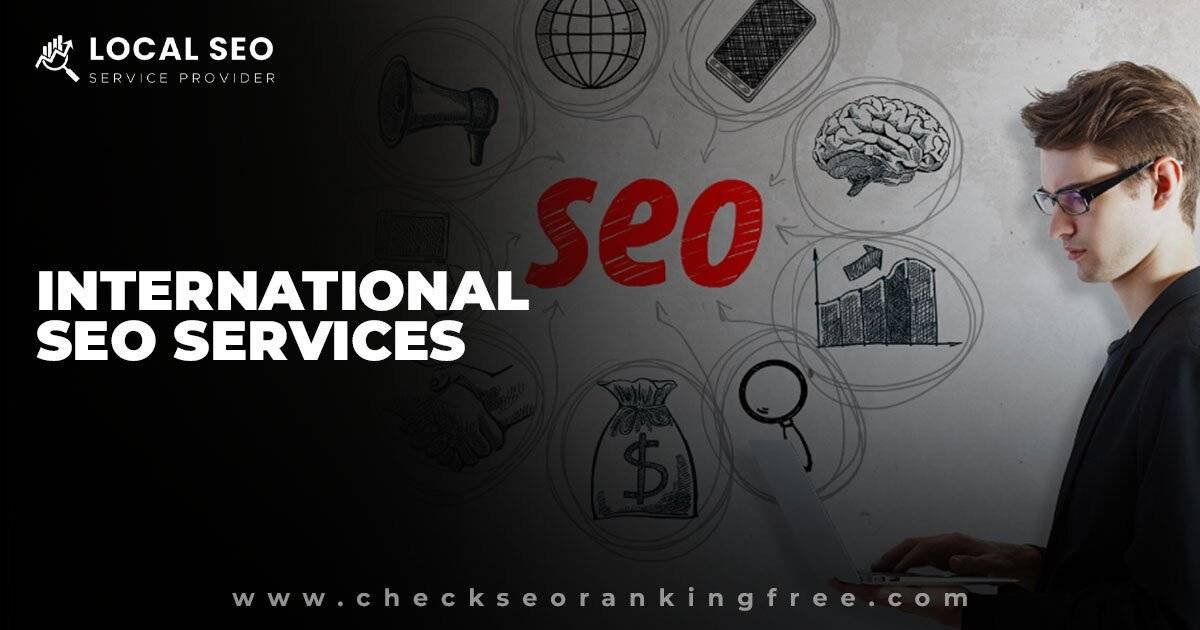International SEO Services: Your Guide to Global Success in 2025
In today’s globalized world, businesses are no longer limited by borders. The internet has opened doors for companies to reach audiences worldwide, creating opportunities for growth and expansion. However, with this increased reach comes a challenge: standing out in a crowded digital marketplace. This is where international SEO services come in. By optimizing your website for different regions and languages, you can ensure that your business is easily discoverable by global audiences.
What is international SEO?
International SEO refers to the process of optimizing your website to rank in search engines across different countries and languages. Unlike traditional SEO, which focuses on local or national rankings, international SEO aims to ensure that your content is visible and relevant to people from various parts of the world.
Let’s take an example to explain further: Imagine you’re a company that sells eco-friendly products. Your business may be based in the U.S., but your goal is to expand into countries like the UK, Germany, and Australia. Without international SEO, your website may not rank well in these countries or might not even be visible to users in those regions. With the right strategies, however, you can tailor your website to meet the needs of each market and appear in search results across the globe.
Why Does Your Business Need International SEO Services?

Expanding into international markets is an exciting opportunity, but it comes with its own set of challenges. Here are some reasons why international SEO services are essential for your global success:
- Increased Visibility: Global SEO ensures your website is visible to international audiences. If you want to attract customers in Germany or Japan, you need to make sure your site ranks in those regions.
- Targeted Audience Reach: Not all markets are the same. Different countries have different search behaviors, languages, and preferences. International SEO allows you to optimize your website according to these specific market needs.
- Competitive Advantage: Many businesses focus on their home market and neglect international markets. By investing in international SEO, you can gain a competitive edge and reach untapped audiences.
- Higher ROI: Effective international SEO strategies can drive organic traffic from global markets, leading to higher sales and return on investment (ROI).
A Real-Life Example of International SEO Success
Take the story of Maria, a small business owner from Spain who launched an online store selling handmade jewelry. Initially, her store was only available in Spanish and catered to a local audience. However, she wanted to expand her business to English-speaking countries like the U.S. and the UK.
Maria decided to invest in international SEO services and worked with an expert to translate her website, optimize it for local search engines in the U.S. and the UK, and adapt her content to suit local trends. Within six months, her website saw a significant increase in traffic, and sales from the U.S. market alone tripled.
Maria’s success story highlights how international SEO can transform a business by making it more visible in global markets. With the right SEO strategies in place, you can replicate her success.
Key Elements of International SEO
When considering international SEO services, several critical elements need to be addressed. Here’s a step-by-step guide to understanding how international SEO works:
1. Targeting the Right Countries and Languages
The first step in international SEO is determining which countries and languages you want to target. For example, if your business has a global reach, you may want to target markets in countries like Canada, Germany, and India. Each of these countries will have different search habits, and you will need to decide whether to target them in their native language or with a translated version of your website.
To ensure that your content is correctly tailored to these countries, you’ll need to:
- Use country-specific domain extensions (e.g., .de for Germany or .co.uk for the UK)
- Create localized content for each market
- Add hreflang tags to tell search engines which version of your website to show to users in each country
2. Optimizing Content for Different Languages
It’s not enough to simply translate your website. While automated translation tools like Google Translate can be helpful, they’re not enough for high-quality localization. International SEO services will focus on adapting your content to reflect local cultures, preferences, and nuances in language.
For example, the word “biscuit” means different things in the UK and the U.S. In the U.S., it refers to a type of bread roll, while in the UK, it refers to what Americans call a “cookie.” This distinction is just one example of why you need to ensure that your content is culturally relevant for your target audience.
3. Optimizing for Local Search Engines
Different countries use different search engines. While Google dominates in most parts of the world, other countries like China use Baidu, and Russia uses Yandex. Each search engine has its own algorithms and ranking factors, so understanding how to optimize for local search engines is crucial for success.
International SEO experts will ensure that your site is optimized for all relevant search engines in your target markets, increasing your chances of ranking well.
4. Mobile Optimization
Mobile usage is skyrocketing globally, and more people access websites on their mobile devices than ever before. Whether your audience is in the U.S. or India, your website must be optimized for mobile viewing. This includes fast loading times, responsive design, and mobile-friendly navigation.
5. Building Local Backlinks
Backlinks are a major factor in SEO rankings. For international SEO, acquiring high-quality backlinks from reputable websites in your target countries is essential. This helps boost your site’s authority in each region and improves your rankings in local search engines.
How to Choose the Right International SEO Service Provider
When selecting a provider for international SEO services, make sure to look for the following:
- Experience in Global SEO: Choose a service provider with experience in targeting international markets and who understands cultural nuances.
- Track Record of Success: Look for case studies or success stories of businesses that have expanded internationally with the help of SEO.
- Customizable Packages: Your business needs are unique, so choose a provider that offers flexible packages tailored to your specific goals.
- Transparency: Ensure the provider offers clear communication and reporting, so you can track your progress.
Here are four FAQs about International SEO Services:
1. What is International SEO?
International SEO is the process of optimizing your website to rank in search engines across different countries and languages, ensuring it’s visible to global audiences.
2. Why do I need International SEO for my business?
If you’re looking to expand into international markets, international SEO helps you increase visibility, reach local audiences, and rank in search engines specific to each country.
3. How does International SEO work?
It involves targeting specific countries, translating and localizing content, optimizing for local search engines, and acquiring local backlinks to improve your rankings globally.
4. How can I find the right International SEO service provider?
Look for a provider with experience in global markets, proven success, customizable SEO strategies, and clear reporting to ensure your international SEO goals are met.
Conclusion: Unlock Your Global Potential with International SEO
Expanding into international markets can be daunting, but with international SEO services, you can ensure that your business gets the visibility it deserves across the globe. From optimizing for local search engines to tailoring content for different languages, the right SEO strategy will help you reach international customers and achieve global success.
Don’t let language barriers or regional differences hold you back. Invest in international SEO today, and watch your business grow beyond borders.


3 Responses
I don’t think the title of your article matches the content lol. Just kidding, mainly because I had some doubts after reading the article.